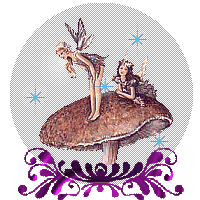Everything you see, and don't see, is shaped by your perception.
As such, it would be un-wise to judge ones perception as lesser or greater than your own.
There is no un-biased view of the "universe" (or whatever you wanna call it).
To understand this better, we need to simplify our view.
Image an apple. As a typical human-being, you percieve it as red, perhaps a taste or texture comes to mind.
However, for, let's say, a dog. Those colors are different, the texture may be more or less pleasant to them than it is to us.
We, as human beings, couldn't ever possibly argue that the dog's perception of the apple is lesser or greater than ours; because all we know is our own perception.
We strive to come up with theories for the apple, we try our best to define deterministic unchanging characteristcs about the apple, as rules we can always hang-on to.
We say the apple is made of molecules, we say those molecules are made of atoms, we say the atoms are made of neutrons, electrons and protons, we say those are composed by quarks, and so on.
The perception of the apple as nothing more than a bunch of atoms, is not unbiased, as it came from us, and we came from our perception.
As a typical human-being, you percieve it as red, perhaps a taste or texture comes to mind.
However, for, let's say, a dog. Those colors are different, the texture may be more or less pleasant to them than it is to us.
We, as human beings, couldn't ever possibly argue that the dog's perception of the apple is lesser or greater than ours; because all we know is our own perception.
We strive to come up with theories for the apple, we try our best to define deterministic unchanging characteristcs about the apple, as rules we can always hang-on to.
We say the apple is made of molecules, we say those molecules are made of atoms, we say the atoms are made of neutrons, electrons and protons, we say those are composed by quarks, and so on.
The perception of the apple as nothing more than a bunch of atoms, is not unbiased, as it came from us, and we came from our perception.
The next logical step, would be to imagine the universe must be everything all at once, to allow for such interpretations.
Think of it this way: Imagine a person (A) who can only see the color red, and another person (B) who can only see the color blue. (For the sake of simplicity, imagine that colors aren't just illusions in your head created by your brain and eye-balls as it observes a very small spectrum of light)
Now imagine there's a painting in front of those people.
There are only four possible scenarios here.
Scenario One: Only (B) is capable os seeing the painting. Does this imply that the painting is red? No. It only implies that the painting is not blue and that is has some amount of red.
Scenario Two: Only (A) is capable os seeing the painting. Same thing as scenario one, this only implies to us that the painting is not red and has some amount of blue.
Scenario Three: (B) and (A) can't see the painting. By these people accounts, the painting doesn't exist. However, with, perhaps, a third person's opinion (C), they could affirm to us that there is in fact a painting there, a yellow one.
Scenario Four: (B) and (A) see the painting. This could only affirm to us, that the painting has some amount of red and some amount of blue, but it could have some amount of some other color.
What these scenarios teach us is that no amount of perceptions will be ever be enough to determine the "true nature" of the painting. The true colors of the painting will never be revealed to us, and neither will the absence of colors.
To some it up in one sentence: "Everything and nothing is and isn't everywhere and nowhere, always and never."









